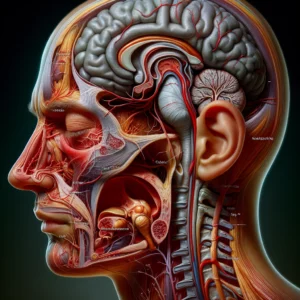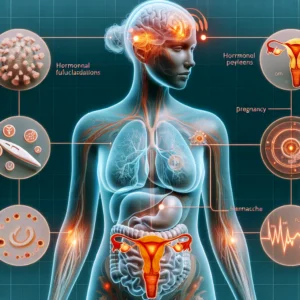Comprehensive Understanding of Headache Causes and Effective Management Strategies
Headaches are a prevalent health concern that can disrupt your daily life, affecting your ability to concentrate, work efficiently, and enjoy your free time. They can present in numerous forms, each associated with distinct triggers and symptoms. Understanding the various types of headaches is vital for effective treatment and management. This knowledge enables individuals to tailor their strategies according to their unique experiences and requirements, leading to a more personalized and effective approach to this common health challenge. By becoming informed, you can better navigate your headache management journey, enhancing your overall quality of life.
Whether you experience occasional headaches or suffer from chronic pain, identifying the underlying causes is crucial for finding appropriate therapies and making beneficial lifestyle modifications. As you explore headache management, consider a wide range of treatment options that include both traditional and alternative remedies. Techniques such as balanced acupuncture, neurological acupuncture, and manual therapy can effectively address the root causes of your headaches, empowering you to regain control over your health and enhance your well-being.
By investigating these various treatment methods, you can embark on a holistic journey aimed at alleviating headaches while simultaneously advancing your overall health and wellness.
Key Insights for Successful Headache Management
- Tension headaches are the most common type, characterized by a consistent band-like pressure around the head that often worsens during stressful situations.
- Migraine headaches manifest as intense, pulsating pain, usually accompanied by nausea, vomiting, and heightened sensitivity to light and sound, severely impacting daily activities.
- Cluster headaches are infamous for their extreme pain, occurring in cyclical patterns and typically focused around one eye, ranking among the most painful headache varieties.
- Sinus headaches stem from sinusitis, causing pressure and discomfort in the forehead, cheeks, and nasal areas, often exacerbated by allergies or infections.
- Hormonal headaches, common in women, correlate with hormonal fluctuations and can occur during menstruation, pregnancy, or menopause, requiring customized management strategies.
 In-Depth Analysis of Tension Headaches and Their Triggers
In-Depth Analysis of Tension Headaches and Their Triggers
Identifying Triggers and Patterns Associated with Tension Headaches
Reflecting on your personal experiences can reveal specific patterns that lead to tension headaches. Factors such as extended periods of desk work, emotional stress, or poor ergonomic setups significantly contribute to their onset. Recognizing these triggers is vital for preventing future headaches and maintaining your health. Common factors include job-related stress, insufficient sleep, and dehydration, all of which can aggravate your discomfort. Keeping a detailed headache diary can help you monitor the timing and causes of these headaches, enabling you to take proactive measures to reduce their impact on your daily routine.
Adopting a Holistic Strategy for Effective Relief from Tension Headaches
A comprehensive, multi-faceted approach is often the most effective way to alleviate tension headaches. Incorporating therapies like balanced acupuncture aims to restore energy flow throughout your body by targeting specific acupoints that may contribute to muscle tightness and stress. Additionally, integrating relaxation techniques such as deep breathing exercises or yoga can significantly relieve tension while boosting your overall health. By addressing both physical and emotional stressors through a holistic strategy, you can substantially decrease the frequency and severity of tension headaches, resulting in an improved quality of life.
Maximizing Relief with Neurological Acupuncture and Manual Therapy Techniques
Neurological acupuncture can further enhance your relief efforts by focusing on the nervous system’s role in pain perception. This specialized technique targets pathways involved in headache development, potentially altering how your brain responds to pain signals. When combined with manual therapy techniques, such as massage or myofascial release, you may experience significant relief from the tension that often exacerbates your headaches. Together, these therapies can create a synergistic effect, alleviating pain while promoting lasting relaxation and enhanced well-being.
 Thorough Guide to Understanding and Managing Migraine Headaches
Thorough Guide to Understanding and Managing Migraine Headaches
Migraines are not merely severe headaches; they represent complex neurological events that can incapacitate you for hours or even days. Characterized by intense, throbbing pain usually localized to one side of the head, migraines can also manifest symptoms such as nausea, vomiting, and increased sensitivity to light and sound. Various triggers, including specific foods, hormonal changes, and environmental factors, can provoke these debilitating episodes, emphasizing the need to identify and manage these elements for effective treatment.
Managing migraines effectively typically necessitates a multi-layered approach. While medications can provide immediate relief during an episode, integrating therapies like acupuncture can significantly reduce the frequency and intensity of future attacks. Neurological acupuncture specifically targets pain pathways associated with migraines, potentially altering your brain’s response to pain stimuli and interrupting the cycle of recurring headaches.
When paired with manual therapy techniques aimed at relieving muscle tension and improving blood circulation, you can discover a more holistic strategy for effectively managing migraine headaches, allowing you to reclaim your daily life from the impact of these distressing episodes.
Comprehensive Understanding of Cluster Headaches: Patterns, Triggers, and Severity Insights
| Metrics | Data |
|---|---|
| Prevalence | 1 in 1,000 adults |
| Age of onset | 20-40 years old |
| Duration of attacks | 15 minutes to 3 hours |
| Pain intensity | Severe, often described as the worst pain experienced |
| Frequency of attacks | 1 to 8 times a day |
Cluster headaches are recognized as some of the most excruciating types of headaches. They often manifest as a burning or piercing pain that occurs in cyclical patterns or clusters. Individuals may experience these attacks multiple times per day over several weeks or months, followed by periods of complete relief. The pain typically focuses around one eye or one side of the head and may be accompanied by additional symptoms such as nasal congestion or tearing, amplifying the distress of the experience.
Due to their intensity, cluster headaches necessitate prompt and effective management strategies. While traditional medications may provide some relief, exploring alternative therapies like acupuncture can significantly decrease the frequency and intensity of these painful episodes. By stimulating specific points associated with the trigeminal nerve—the primary nerve involved in headache pain—neurological acupuncture may help regulate your body’s pain response, potentially alleviating some of the burden associated with cluster headaches.
When coupled with manual therapy techniques aimed at promoting relaxation and reducing stress levels, you may discover a more balanced and effective approach to managing these intense headache episodes, ultimately enhancing your overall quality of life.
 Understanding the Challenges Associated with Sinus Headaches
Understanding the Challenges Associated with Sinus Headaches
Sinus headaches commonly arise when inflammation or infection in the sinus cavities leads to uncomfortable pressure and pain in the forehead, cheeks, and around the eyes. You may also experience these headaches alongside nasal congestion, facial tenderness, and even fever. Understanding the underlying causes of sinus headaches is critical for effective management, as they frequently stem from allergies or respiratory infections that can worsen your symptoms, creating a cycle of discomfort.
A combined approach of therapies can be particularly beneficial in effectively addressing sinus headaches. Acupuncture has proven effective in reducing inflammation and promoting drainage within the sinuses, alleviating the pressure and discomfort associated with these headaches. Utilizing balanced acupuncture techniques specifically targets acupoints related to sinus health, while neurological acupuncture can address any related pain pathways contributing to your suffering.
Moreover, integrating manual therapy can relieve tension in the neck and shoulders, which may further exacerbate sinus pressure. This comprehensive, multifaceted strategy can provide substantial relief from the discomfort associated with sinus headaches, allowing you to breathe easier and enjoy a more comfortable daily experience.
 Exploring Hormone-Related Headaches and Their Management Strategies
Exploring Hormone-Related Headaches and Their Management Strategies
Unpacking the Complex Relationship Between Hormones and Headache Patterns
Investigating the intricate connection between hormones and headache occurrences can empower you to take proactive steps in managing these specific headaches. Hormonal fluctuations, particularly among women, can trigger painful headaches, often coinciding with menstrual cycles, pregnancy, or menopause. By recognizing these patterns, you can better anticipate potential headache episodes, thus managing them more effectively.
Natural Remedies for Effective Relief from Hormone-Related Headaches
To alleviate hormone-related headaches, consider incorporating therapies that focus on balancing your body’s energy and hormonal levels. Acupuncture has been shown to help regulate hormonal fluctuations by stimulating specific acupoints that influence endocrine functions. Additionally, neurological acupuncture can enhance this approach by addressing the nervous system’s role in pain perception during hormonal shifts, providing a more comprehensive treatment experience that targets the underlying causes.
Holistic Strategies for Managing Hormone-Related Headaches
When paired with manual therapy techniques aimed at promoting relaxation and reducing stress, you may uncover a more effective way to manage hormone-related headaches. This holistic approach can help you navigate the complexities of hormonal changes, equipping you with the tools needed to alleviate pain and improve your overall quality of life, enabling you to thrive even amid these fluctuations.
 Strategies for Breaking Free from Rebound Headaches
Strategies for Breaking Free from Rebound Headaches
Rebound headaches frequently occur as a result of overusing pain relief medications, leading to a cycle of dependency and an increase in headache frequency. You may find yourself reaching for over-the-counter pain relievers more often than necessary, only to face worsening headaches as the medication’s effectiveness diminishes. Recognizing this cyclical pattern is key to breaking free from rebound headaches and restoring your health.
To effectively manage rebound headaches, it’s vital to decrease your reliance on medications while gradually exploring alternative therapies. Acupuncture offers a natural method to relieve pain without resorting to pharmaceuticals. Utilizing balanced acupuncture techniques can help restore energy flow and encourage relaxation, while neurological acupuncture addresses the underlying pain pathways affected by medication overuse.
By incorporating manual therapy techniques that focus on reducing tension and alleviating stress, you may develop a holistic strategy to break the cycle of rebound headaches. This approach ultimately empowers you to regain control of your health and well-being, enhancing your overall quality of life.
 Effective Techniques for Understanding and Managing Mixed Headaches
Effective Techniques for Understanding and Managing Mixed Headaches
Mixed headaches present a unique challenge as they incorporate characteristics from multiple headache types, complicating both diagnosis and treatment. You may experience symptoms akin to tension headaches one day and migraines the next, making it crucial to customize your management strategy according to your specific symptoms. Understanding the complexities associated with mixed headaches is essential for developing a treatment plan that aligns with your individual needs.
Consider adopting a comprehensive approach that incorporates various therapies to effectively manage mixed headaches. Acupuncture can be particularly beneficial in addressing the diverse symptoms associated with mixed headaches by targeting multiple acupoints relevant to different headache types. Additionally, neurological acupuncture may assist in modulating pain perception across various pathways, while balanced acupuncture promotes overall well-being and alleviates discomfort.
Moreover, manual therapy techniques can effectively relieve muscle tension and stress that may contribute to headache development. By integrating these diverse approaches, you can create a personalized strategy for managing mixed headaches, significantly improving your overall quality of life.
Common Questions Regarding Headaches and Their Management
What are the different types of headaches?
There are several distinct types of headaches, including tension, migraines, cluster, sinus, and hormone-related headaches. Each type features unique characteristics and treatment options, necessitating tailored approaches for effective management.
Can you provide more information about tension headaches?
The Article Types of Headaches Explained: A Comprehensive Guide appeared first on https://mcrtherapies.com
The Article Headache Types Explained: Your Comprehensive Guide Was Found On https://limitsofstrategy.com


Your exploration of headache causes and management strategies resonates deeply with many individuals who navigate the complexities of this common but often debilitating condition. As someone who has dealt with migraines for the past several years, I can attest to the importance of understanding the various types of headaches and their triggers. For me, identifying stress and certain dietary choices as key factors has been transformative; each revelation enabled me to adapt my lifestyle and approach to management.
It’s great to hear how you’ve been able to navigate your migraine journey. Identifying stress and dietary triggers can really shift the way we manage our health, and it sounds like you’ve made some significant strides. It’s interesting how something as simple as food can have such a profound impact on our bodies.
Having navigated the intricacies of travel planning myself, I found some thoughtful insights that could really help those looking to explore San Miguel de Allende with ease and confidence.
‘Travel FAQ for San Miguel de Allende: Essential Answers’
https://yobiboy.com/travel-faq-for-san-miguel-de-allende-essential-answers/.
It’s really fascinating how interconnected our health and lifestyle choices can be, especially when it comes to things like managing migraines. I’ve found that being mindful of what I eat and how I handle stress has been key in keeping symptoms at bay. It’s a constant learning process, though; even small changes can make a notable difference.